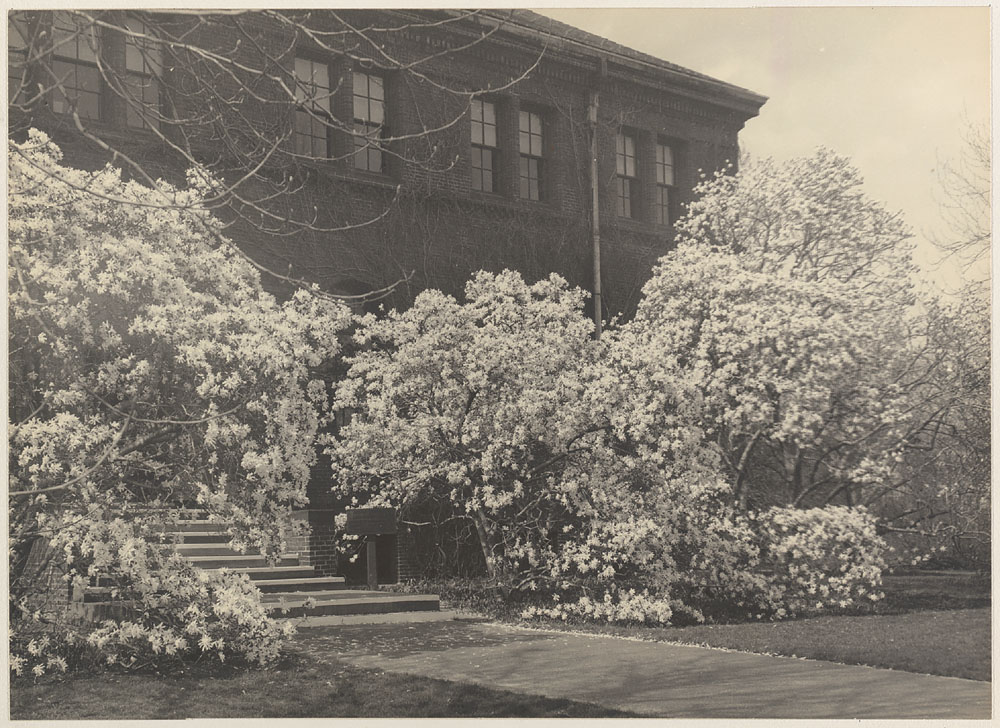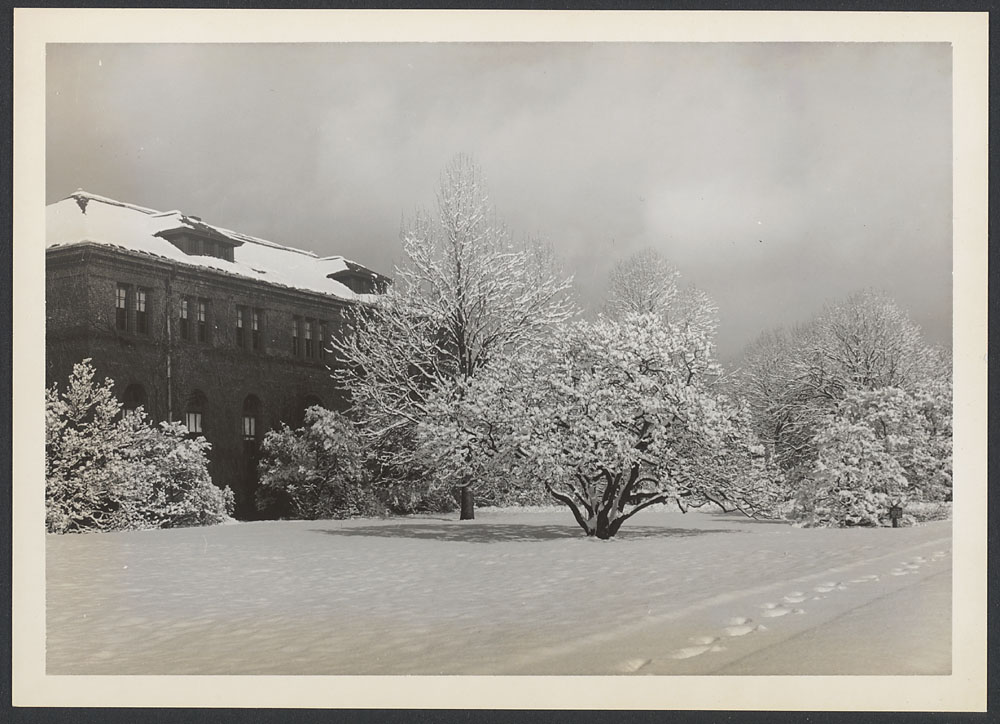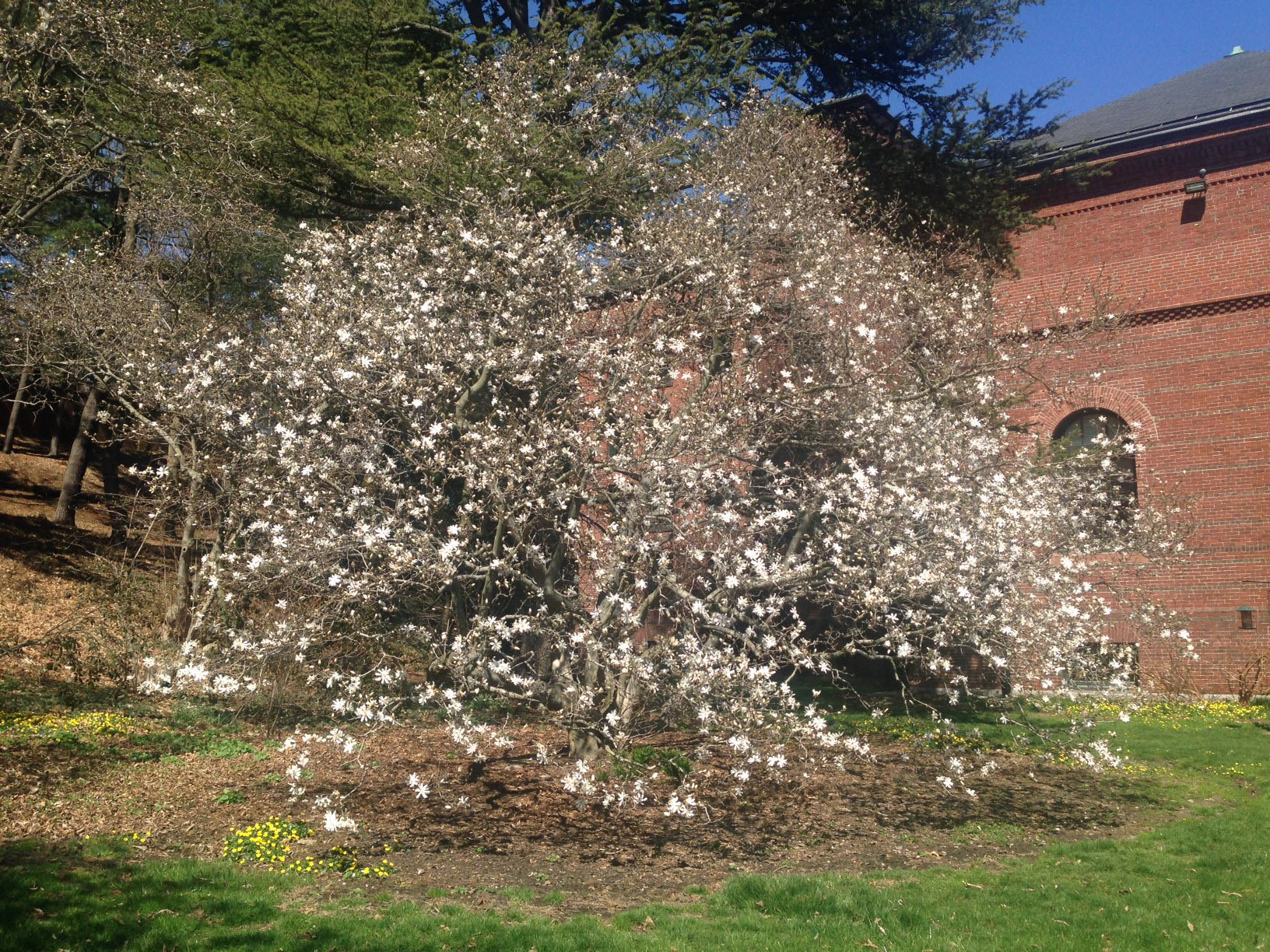









Magnolia trees surrounding the Hunnewell Building at the Arnold Arboretum unleash their flowering with shameless abandon throughout the month of April—and why not? This ancient family of deciduous trees is easy to fall in love with, if not for their fragrance then their variety—they subdivide into hundreds of cultivars and hybrids, and their colors vary beyond pink and white. They also bloom shades of yellow, purple, and even red. Magnolias are an easy favorite for many botanists and horticulturalists—indeed many professionals make growing, nurturing, and conserving them their primary focus. The Magnolia Society, for example, are dedicated to the genus and helps educate members about their cultivation, taxonomy, and history. Their journal and newsletter are both available in the library, in addition to an extensive collection of monographs devoted to this genus.
The history of magnolia goes back millions of years—the tree has withstood all of the world’s climatic shifts including The Ice Age. During the 1970s in Idaho, excavators discovered fossilized magnolia leaves that dated back to the Miocene epoch (5-23 million years ago). Ancient traces of this plant also cast a huge geographical net—although magnolias are currently native to East and Southeast Asia and North America, some grow in Colombia and Central America as well. Their sizes vary from smaller shrubby trees, to a maximum height of about 70 feet tall, and have both practical and ornamental uses.
Arboretum plant explorer Ernest Henry Wilson popularized magnolias throughout New England during the early 20th century. Our founding Director Charles Sargent studied the distribution of Magnolia virginiana throughout the eastern and southern United States. Since they are such a time-honored genus, it is safe to say magnolias played a major role in plant evolution including pollination of ecosystems. Magnolias even pre-date bees!
In this series of images, we provide historic and current views of magnolias in bloom at the Hunnewell Building, just inside the Arborway Gate / Main Entrance at 125 Arborway in Jamaica Plain, Massachusetts. Come enjoy these blooms today, they’re very good at showing off.
—Larissa Glasser, Library Assistant
SOURCES
Losada, Juan M. “Magnolia virginiana : Ephemeral Courting for Millions of Years.” Arnoldia 71(3) 2014 [pdf].
Del Tredici, Peter. “Magnolia x thompsoniana ‘Cairn Croft.’” Arnoldia 65(1) 2007 [pdf].
Figlar, R.B. “Stone Magnolias.” Arnoldia 53(2) 1993 [pdf].
Del Tredici, Peter and Spongberg, Stephen A. “A New Magnolia Blooms in Boston.” Arnoldia 49(2) 1989 [pdf].
Weaver, Richard E. Jr. “Magnolia fraseri.” Arnoldia 41(2) 1981 [pdf].
Magnolia, the journal of the Magnolia Society International [HOLLIS].
Magnolia magazine : news and notes from the Magnolia Society, Inc. [HOLLIS].
Bunting, Andrew. The plant lover’s guide to magnolias. Portland, Oregon : Timber Press, 2016. [HOLLIS].
From “free” to “friend”…
Established in 1911 as the Bulletin of Popular Information, Arnoldia has long been a definitive forum for conversations about temperate woody plants and their landscapes. In 2022, we rolled out a new vision for the magazine as a vigorous forum for tales of plant exploration, behind-the-scenes glimpses of botanical research, and deep dives into the history of gardens, landscapes, and science. The new Arnoldia includes poetry, visual art, and literary essays, following the human imagination wherever it entangles with trees.
It takes resources to gather and nurture these new voices, and we depend on the support of our member-subscribers to make it possible. But membership means more: by becoming a member of the Arnold Arboretum, you help to keep our collection vibrant and our research and educational mission active. Through the pages of Arnoldia, you can take part in the life of this free-to-all landscape whether you live next door or an ocean away.
